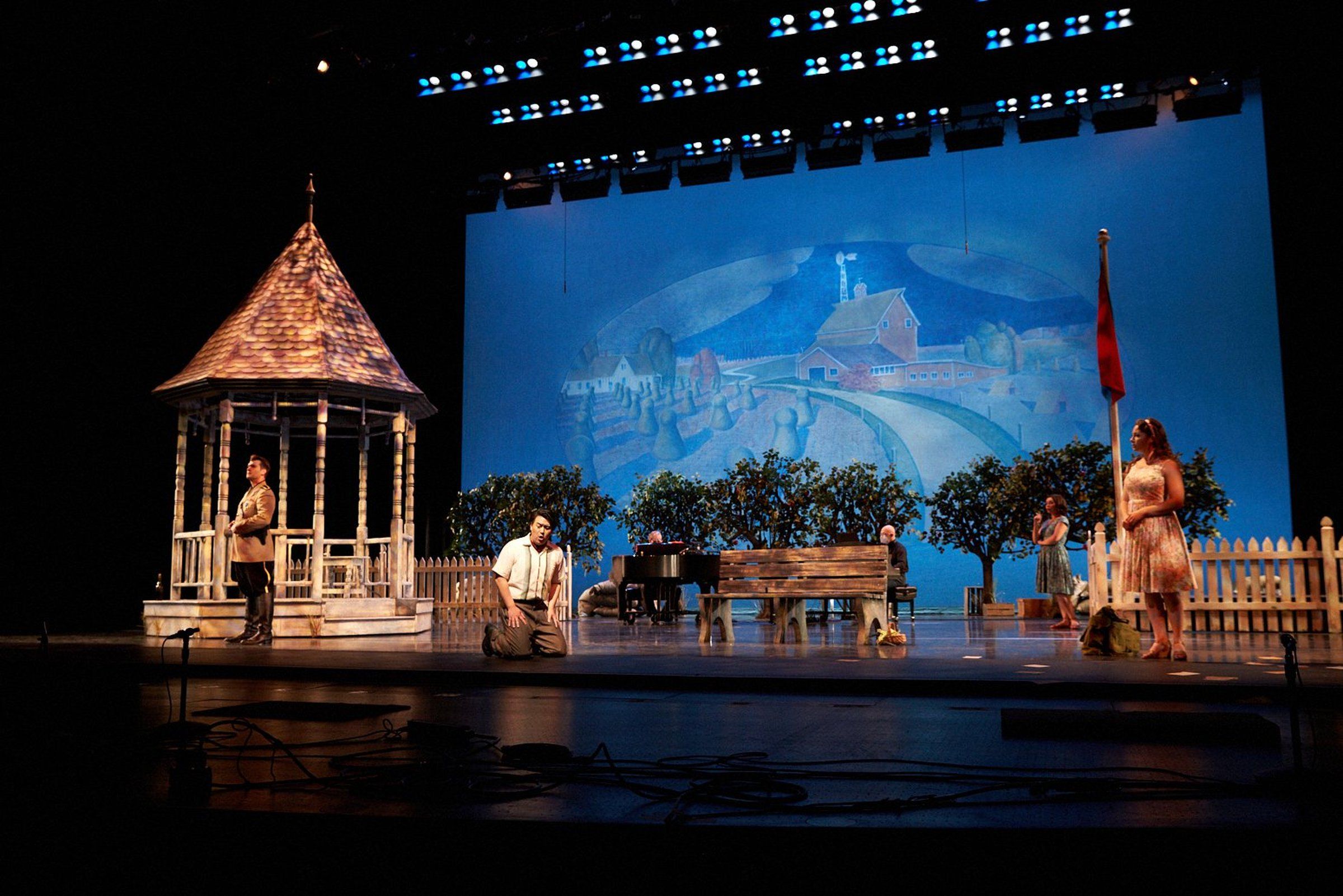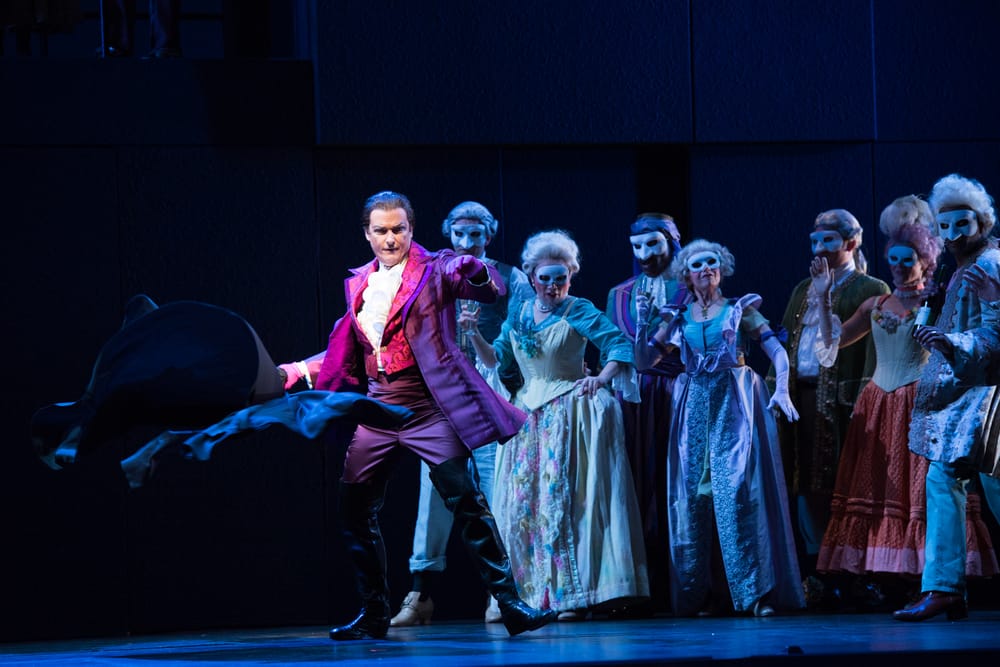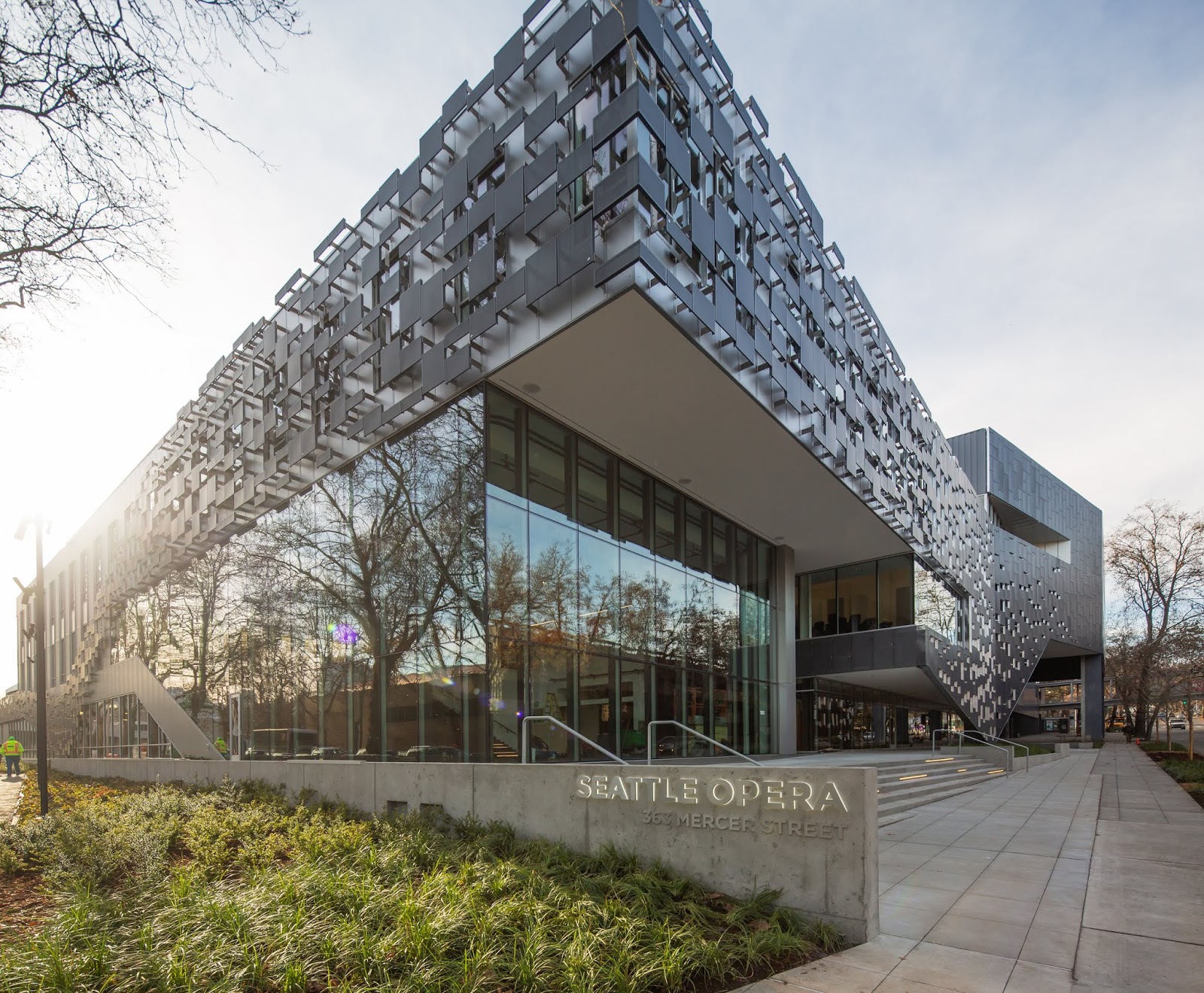


Murrah as Orpheus, Shelly Traverse as Eurydice. When the music begins, the calm sky liquefies into tears of rain on a foggy window.as Robed figures bring a veiled figure on a catafalque to center stage, and the immemorial story of the demigod of music journeys to Hades to recover his last love.

The air throbs with muffled vibrations, as if a great engine is idling somewhere near. To the rear, where the sky meets the horizon, an enigmatic circle opens on a void. The tiny orchestra is already on stage, penned like sheep in a fold to one side of the tiny playing area Behind and over them, like the interior of a nautilus shell, lies a projection of the night sky, rendering in the chalk white and deep navy of an engineer’s blueprint a Rococo map of the constellations and the astrologic Houses of the Zodiac. The ”action” begins long before the music starts. The return to live performance in October 2021 with a miniaturized Bohème in an underpopulated, cavernous McCaw Hall wasn’t much more promising, so expectations were not high on the opening night of a similarly trimmed-down version of Gluck’s first version of Orfeo ed Euridice for 1762 Vienna, performed in an 150-bleacher seat black box (grandly titled for the occasion the Tagny Jones Theater) wedged into the atrium of the Opera’s administration area. During the entire epidemic, Seattle Opera continued to create, primarily through videos showing it in survival mode: a monochrome, monaural reduction of Don Giovanni Jonathan Dove’s “airport opera” Flight lip-synced in a deserted local aeronautical museum (taped solo recitals, panel discussions, previews, post-mortems, all with the numbingly dutiful feel of visits to a hospice ward where an old friend lay, condition stabilized but not auspicious.


 0 kommentar(er)
0 kommentar(er)
